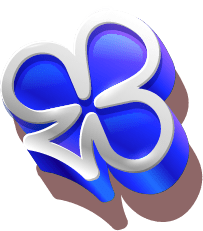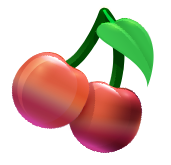Create your own Wheel and edit it.
Character Drawing Ideas


- Discover a wide range of character drawing ideas across various genres
- Learn essential techniques to improve your character design skills
- Explore both digital and traditional mediums for character creation
Enjoy the fun and randomness!
Bring your Characters to Life
Getting Started with Character Drawing
Before diving into specific character drawing ideas, it’s essential to lay a solid foundation. Here are some key aspects to consider:
Essential Tools and Materials
To get started with character drawing, you’ll need:
- Sketchbook or drawing paper
- Pencils (HB, 2B, 4B)
- Eraser
- Fineliner or ink pens
- Optional: Colored pencils, markers, or digital drawing tablet
Basic Techniques for Sketching Characters
- Start with basic shapes (circles, ovals, rectangles) to form the character’s structure
- Add guidelines for proportions and facial features
- Refine the sketch with more detailed lines
- Erase unnecessary guidelines and add finishing touches
Understanding Proportions and Anatomy
Study human and animal anatomy to create more realistic characters. Pay attention to:
- Head-to-body ratios
- Facial feature placement
- Muscle groups and bone structure
- How the body moves and poses
GAMES & FUN
Pick The Wheel is FREE, we offer customizable wheel options for your needs. Enjoy the thrill? Consider buying a license to motivate us to create more games and wheels on this platform.
Popular Cartoon Character Drawing Ideas
Cartoon characters are a fantastic starting point for aspiring artists. They allow for exaggeration and stylization, making them fun to draw and perfect for developing your unique style.
Iconic Cartoon Characters
Draw inspiration from popular cartoons:
- Classic characters like Mickey Mouse or Bugs Bunny
- Modern favorites such as Steven Universe or Adventure Time characters
- Anime-inspired characters from Studio Ghibli films
Creating Your Own Cartoon Character
- Start with a simple concept or personality trait
- Exaggerate key features to make the character memorable
- Experiment with different body shapes and sizes
- Add unique accessories or clothing to enhance the character’s personality
Tips for Adding Personality to Cartoon Characters
- Use expressive eyes and eyebrows
- Experiment with exaggerated facial expressions
- Incorporate dynamic poses to convey emotion and energy
- Develop a signature style for your characters (e.g., big heads, tiny bodies)
Original Character Drawing Ideas
Creating original characters allows you to express your creativity fully. Here are some ideas to get you started:
Developing Unique Character Concepts
- Combine traits from different animals to create a new species
- Imagine characters based on everyday objects (e.g., a living paintbrush)
- Design characters inspired by different cultures or historical periods
Mixing and Matching Traits
Try these combinations for interesting character designs:
- A steampunk mermaid
- A cyberpunk fairy
- A post-apocalyptic knight
Character Design Challenges
Push your creativity with these challenges:
- Design a character using only three colors
- Create a character based on your favorite song
- Draw a character that represents an abstract concept (e.g., hope, chaos)
Drawing Characters from Different Genres
Exploring various genres can help you expand your artistic repertoire and discover new drawing ideas.
Fantasy Characters
Bring magical beings to life:
- Wizards with intricate robes and staffs
- Elves with pointed ears and graceful features
- Dragons with unique scale patterns and wing designs
Sci-fi Characters
Imagine futuristic beings:
- Aliens with unconventional body structures
- Robots with sleek or industrial designs
- Space explorers with advanced technology and gear
Superhero Characters
Create powerful and dynamic characters:
- Design an original superhero with a unique power
- Reimagine classic superheroes in your own style
- Develop a team of superheroes with complementary abilities
A list of 50 cartoon character drawing ideas that can be used and updated for the options:
- Superhero Cat
- Grumpy Old Tree
- Talking Pizza Slice
- Disco-Dancing Penguin
- Nerdy Alien
- Ninja Cupcake
- Pirate Hamster
- Rocket-Powered Snail
- Magical Unicorn Barista
- Time-Traveling Toaster
- Skateboarding Broccoli
- Vampire Rubber Duck
- Cowboy Cactus
- Mermaid Detective
- Robot Chef
- Wizard Squirrel
- Astronaut Dog
- Rockstar Sloth
- Karate Carrot
- Zombie Cheerleader
- Steampunk Octopus
- Fairy Tale Wolf in Therapy
- Cyberpunk Grandma
- Pirate Ghost
- Samurai Panda
- Clumsy Ninja
- Mad Scientist Bunny
- Dinosaur Ballerina
- Luchador Rooster
- Vampire Slaying Teddy Bear
- Goth Fairy
- Hipster Yeti
- Sushi Roll Wrestler
- Bubblegum-Blowing Dragon
- Beatboxing Frog
- Secret Agent Platypus
- Yoga-Practicing Giraffe
- Heavy Metal Unicorn
- Breakdancing Snowman
- Surfing T-Rex
- Knitting Werewolf
- Graffiti Artist Elephant
- Opera-Singing Fish
- Moustache-Twirling Villain Kitten
- Skydiving Turtle
- Piñata Martial Arts Master
- Intergalactic Food Truck Owner
- Beatnik Coffee Bean
- Rollerblading Crab
- Ukulele-Playing Cloud
These ideas combine unexpected elements, occupations, and animal/object hybrids to create fun and imaginative cartoon characters. Just copy and paste and save your options! They range from silly to slightly absurd, providing a wide variety of options for artists to challenge their creativity and drawing skills.
Things to Draw: Character-Focused Scenes
Take your character drawing to the next level by placing them in interesting scenarios:
Characters in Action Poses
- A warrior mid-battle stance
- A dancer performing a complex move
- An athlete at the peak of their performance
Character Interactions and Group Compositions
- A group of friends sharing a meal
- Two characters engaged in an intense conversation
- A family portrait with distinct personalities shining through
Characters in Unique Environments
- A deep-sea diver exploring an alien underwater world
- A time traveler in a historical setting
- A character navigating a surreal, dreamlike landscape
Drawing Ideas: Exploring Character Emotions and Expressions
Bringing emotions to your characters is crucial for creating engaging artwork.
Capturing Various Facial Expressions
Practice drawing these expressions:
- Joy, sadness, anger, fear, surprise, disgust
- Subtle emotions like contempt, skepticism, or amusement
- Exaggerated expressions for cartoon characters
Body Language and Posture in Character Drawing
Consider how emotions affect the entire body:
- Confident characters stand tall with open postures
- Shy characters might hunch or cross their arms
- Excited characters may have bouncy, energetic poses
Creating Character Mood Boards
Develop mood boards to explore character personalities:
- Collect images that represent the character’s style and interests
- Include color palettes that reflect the character’s personality
- Add textures, patterns, and objects associated with the character
Character Development Through Storytelling
Great characters have depth and backstory. Use these techniques to enhance your character designs:
Creating Character Backstories
- Develop a brief history for your character
- Consider their motivations and goals
- Think about key events that shaped their personality
Designing Character Arcs
- Plan how your character might grow or change over time
- Sketch different versions of the character at various life stages
- Illustrate key moments in the character’s journey
Illustrating Character Growth and Transformation
- Show physical changes as the character ages or evolves
- Depict shifts in the character’s style or appearance as they experience life events
- Illustrate how the character’s abilities or powers develop
Digital vs. Traditional Character Drawing
Both digital and traditional mediums offer unique advantages for character drawing.
Pros and Cons of Each Medium
Traditional:
- Tactile experience and connection to materials
- No need for technology or power
- Limited undo options and more challenging to edit
Digital:
- Easy to edit and experiment with different versions
- Wide range of tools and effects available
- Potential for technical issues and learning curve with software
Popular Digital Tools for Character Drawing
- Procreate (iPad)
- Adobe Photoshop and Illustrator
- Clip Studio Paint
- Krita (free and open-source)
Blending Traditional and Digital Techniques
- Scan traditional sketches and refine them digitally
- Use digital tools for initial sketches and print them for traditional inking
- Combine hand-drawn elements with digital coloring and effects
Improving Your Character Drawing Skills
Continuous practice and learning are key to improving your character drawing abilities.
Practice Exercises and Daily Sketching Routines
- Set aside time each day for quick character sketches
- Participate in online drawing challenges like Inktober or MerMay
- Practice drawing the same character in different poses and expressions
Studying Anatomy and Figure Drawing
- Attend life drawing classes or sessions
- Use online resources and tutorials for anatomy studies
- Practice drawing from reference photos and life observations
Analyzing and Learning from Professional Character Artists
- Follow character artists on social media for inspiration
- Watch speed-drawing videos and process breakdowns
- Attend workshops or webinars hosted by professional artists
Sharing Your Character Drawings
Showcase your work and connect with other artists to grow your skills and find inspiration.
Building an Online Portfolio
- Create accounts on art-sharing platforms like ArtStation or DeviantArt
- Regularly update your portfolio with your best work
- Include process shots and explanations of your character designs
Participating in Art Challenges and Communities
- Join online art communities and forums
- Participate in character design challenges and contests
- Collaborate with other artists on character-based projects
Receiving and Implementing Feedback
- Ask for constructive criticism from fellow artists
- Be open to suggestions and willing to revise your work
- Use feedback to identify areas for improvement in your character designs
Character drawing is an exciting and rewarding art form that allows you to bring your imagination to life. By exploring various genres, techniques, and mediums, you can develop your unique style and create memorable characters that resonate with viewers. Remember, the key to improvement is consistent practice and a willingness to learn and experiment.
So, grab your sketchbook or digital tablet and start bringing your character ideas to life today! Who knows? Your next drawing might be the beginning of an entire world of characters waiting to be discovered. Ready to bring your character ideas to life? Don’t let indecision hold you back! Use Pick The Wheel to randomly select character traits, genres, or drawing prompts. Simply enter your options, spin the wheel, and let inspiration strike. Share your results with friends and challenge them to draw the same character prompt. Start spinning and drawing today!
FAQs
Q: What are some easy characters to draw for beginners?
For beginners, start with simple cartoon characters like:
- Stick figures with personality
- Basic animal characters (e.g., cats, dogs, birds)
- Emoji-inspired characters
- Simple robots or monsters
Q: How can I make my characters more unique?
To make your characters stand out:
- Combine unexpected traits or features
- Give them distinct silhouettes
- Develop a unique backstory for each character
- Experiment with unconventional color schemes
Q: What's the best way to practice character drawing?
Improve your skills by:
- Sketching characters daily
- Studying anatomy and real-life references
- Participating in online drawing challenges
- Analyzing and recreating characters you admire
Q: How do I overcome artist's block when drawing characters?
To overcome creative blocks:
- Use random character generators for inspiration
- Combine traits from different characters or objects
- Draw characters based on words picked at random
- Take a break and seek inspiration from other art forms or nature
